Home Run Derby preview: Examining the field, the format and Petco Park

The last time that the Home Run Derby took place in San Diego was in 1992 at Qualcomm Stadium, which was then still known as Jack Murphy Stadium. Fred McGriff and Gary Sheffield represented the hometown Padres in that year’s Derby, which was won by the Athletics' Mark McGwire (see the 1:09 mark here). Twenty-four years later, the Derby returns to San Diego, with a new cast and updated rules.
The Derby has been delayed by rain each of the last two years, but that shouldn’t be an issue Monday night in San Diego, where the forecast is 72 degrees with zero percent change of precipitation. The contest should begin as scheduled at 8 p.m. ET and will be televised by ESPN. The following is a breakdown of everything you need to know about the Derby, including the revamped rules, the host ballpark and the eight participants.
The Format
Two years ago, MLB realized that the Derby had become a bore. When the contest began in 1985, it was a lark: It wasn’t televised until '93 and wasn’t broadcast live until '98. In the “chicks dig the long ball era,” the contest swelled in popularity, but it also just swelled, lasting as long or longer than a typical regular-season game, with hitters refusing to swing at anything less than a perfectly placed pitch as there was no penalty for taking pitches. On top of that, all eight hitters had to hit in the first round before it was determined which four would advance to the second round. As a result, more than an hour would elapse before anyone was officially eliminated, and over the course of a nearly three-hour broadcast, there would be just three results.
After 10 years of the same format, MLB finally adjusted the Derby rules, introducing a head-to-head competition in 2014, then going to a full bracket format and introducing timed rounds (meaning there would finally be a penalty for taking pitches) last year. The result was a promising but convoluted set of rules for last year’s Derby.
Then a miracle happened at last year's All-Star festivities in Cincinnati: It rained.
Concerned about fitting the Derby into what appeared to be a small window of dry weather in Cincinnati, MLB made a spur-of-the-moment decision to simplify the rules. They shaved a minute off the clock for each hitter and eliminated one potential time bonus as well as a plan to stop the clock for any home runs hit in a player’s final minute. The result was by far the most exciting home run Derby in two decades. Not only was there a sense of urgency and suspense due to the clock, but the bracket format also produced regular results: It took less than 15 minutes to eliminate the first hitter, and the entire contest lasted less than two hours.
Rather than reverting to last year’s intended rules for this year’s Derby, MLB has wisely retained the simplified version with only the slightest adjustment. Here’s how it works:
The eight participants are seeded and placed in a bracket (see below) in which they will compete head-to-head with the player with the fewest home runs in each matchup being eliminated. Each player gets four minutes to hit in each round, with the clock starting with the release of the first pitch. During those four minutes, if a player hits two home runs measured at 440* feet or more by Statcast, he will be rewarded with 30 seconds of extra time for that round, but only one time bonus will be awarded per player per round. Each player also gets one 45-second timeout in each round; in the finals, the two participants are allowed two such timeouts. If the second hitter in a matchup surpasses the first hitter’s total, his turn will stop with the go-ahead home run, regardless of how much time is left on the clock. Ties are broken by 60-second swing-offs with no time outs or bonus time. If a matchup remains tied after the 60-second swing-off, three-swing swing-offs will be held until a result is achieved.
*15 feet longer than last year’s requirement, the only change in this year’s rules
The Derby Field
Note: All distances (in feet) and exit velocities (in mph) are according to Statcast; the database is missing that information for two home runs each by Frazier, Duvall and Cano and one by Gonzalez. HR/Con is home runs on contact, the percentage of fair balls hit by the batter that were home runs (HR/Con = HR/(PA – K – BB – HBP)).
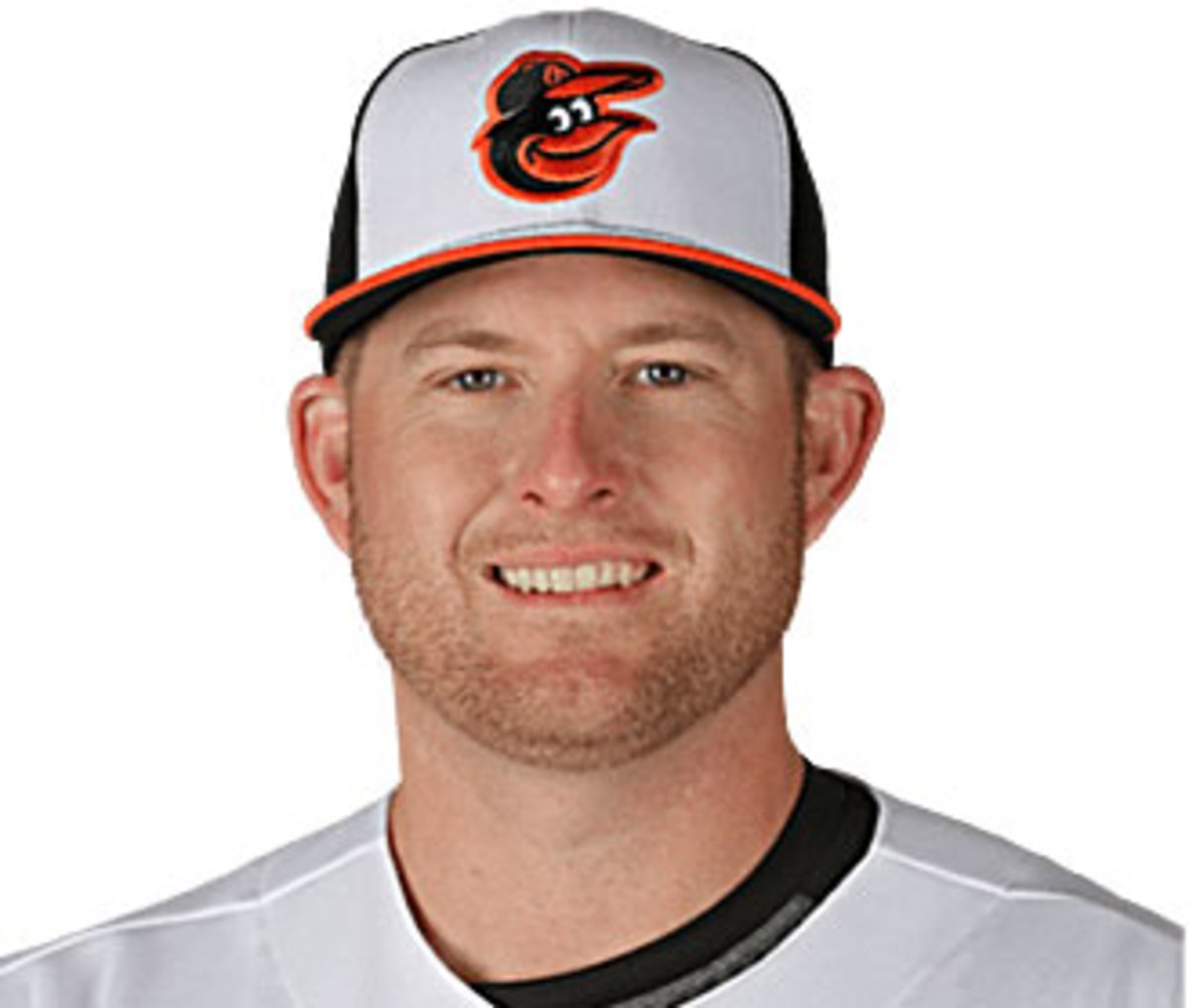
Mark Trumbo, DH/OF, Orioles
Seed: 1
Age: 30
Swings: Right
2016 HR (HR/Con): 28 (11.3%)
Career HR (HR/Con): 159 (7.5%)
Average Distance: 411 feet
Long: 458 feet
Avg. Exit Velocity: 107 mph (High: 115)
The major league home run leader with 28, Trumbo is a one-dimensional player, but that one will be on display in this contest. Trumbo has tremendous power: In this year’s derby field, only Miami's Giancarlo Stanton has a higher average exit velocity on his home runs, and only Stanton and Colorado's Coors Field-assisted Carlos Gonzalez have a longer average distance. Eighteen of Trumbo’s 28 home runs this season have traveled 400 feet or farther; that's higher than No. 8 seed Corey Seager's total home run output this year. Trumbo also enters this contest on a hot streak, having hit four home runs in his final four games of the first half and slugging .750 with eight home runs over his last 17 games.
Trumbo’s only other Derby appearance came in Kansas City in 2012, but he put on a show, hitting 13 home runs in the first two rounds combined and missing out on the finals only after losing a swing-off to Jose Bautista, who had led the majors in home runs the previous two seasons. To reach the finals this year, Trumbo may have to survive a second-round matchup with Stanton, but if there’s any hitter who could match the Marlins' slugger moonshot for moonshot, it’s him.
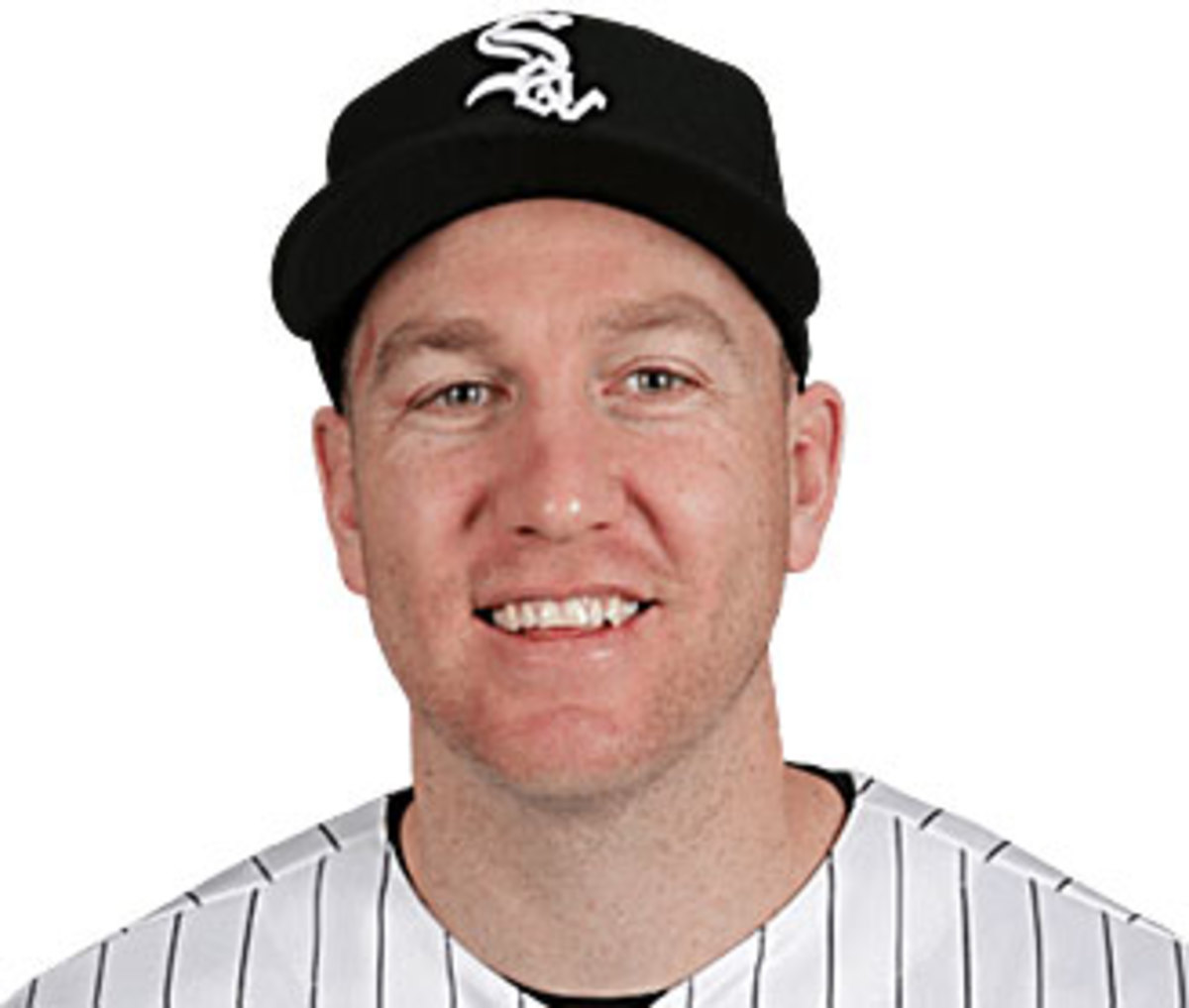
Todd Frazier, 3B, White Sox
Seed: 2
Age: 30
Swings: Right
2016 HR (HR/Con): 25 (10.5%)
Career HR (HR/Con): 133 (6.6%)
Average Distance: 391 feet
Long: 427 feet
Avg. Exit Velocity: 103 mph (High: 109)
The defending Derby champion, Frazier made it to the finals at Target Field in 2014 and won the event in Cincinnati last year. Frazier hit second in last year’s finals and was faced with the challenge of besting rookie Joc Pederson’s 14 home runs, which tied Frazier’s first-round total for the most in any round since back-to-back champion Yoenis Cespedes’s opening salvo in 2013. Frazier rose to the challenge by tying Pederson in his allotted four minutes, then hitting the Derby-winning home run on the first pitch of his bonus time. In the process, he tied Pederson for the second-best home run total in a single derby with 39, trailing only Bobby Abreu’s 41 in 2005.
That performance, along with the fact that he has reached the finals each of the last two years and that he won’t have to face Trumbo or Stanton in either of the first two rounds makes Frazier the favorite to reach the finals yet again. If he does so, he’ll be come the first player to make the finals three straight seasons since Sammy Sosa did from 2000 to '02, winning in only the first of those years.
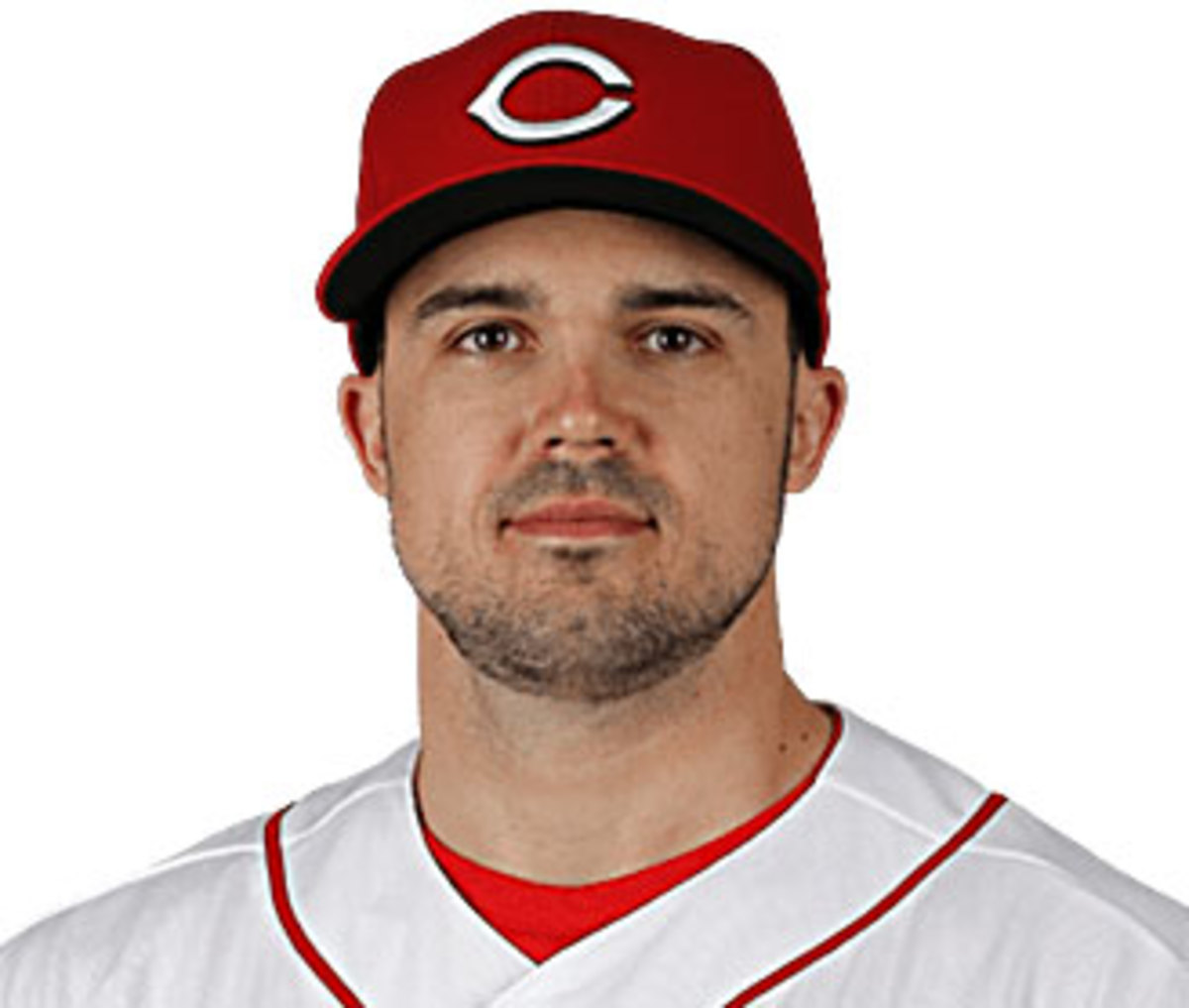
Adam Duvall, OF, Reds
Seed: 3
Age: 27
Swings: Right
2016 HR (HR/Con): 23 (10.8%)
Career HR (HR/Con): 31 (10.2%)
Average Distance: 401 feet
Long: 457 feet
Avg. Exit Velocity: 103 mph (High: 110)
Selected four spots ahead of Joc Pederson in the 11th round of the 2010 draft, Duvall has always had big-time power; what he lacked was a position and a major league opportunity. Drafted as a second baseman, he moved to third base, then first, then leftfield in the Giants' system before being flipped to the Reds in last year’s Mike Leake trade. Born, raised and matriculated in Louisville, he has found a home in nearby Cincinnati this season, emerging as the full-time leftfielder of the rebuilding Reds and earning the nickname “The Louisville Slugger” by hitting 23 home runs, fewer than only Trumbo, Frazier and Kris Bryant in the first half.
Duvall's All-Star selection may have been generous—he was Cincinnati's lone representative until Jay Bruce replaced the Cubs' Dexter Fowler on the roster—but he belongs in the Derby. In Duvall's young major league career, 30.4% of his hits have been home runs; no active major leaguer with 100 or more career hits (Duvall has 103) has a higher percentage. He poses a significant threat to home-team entrant Wil Myers in the first round.
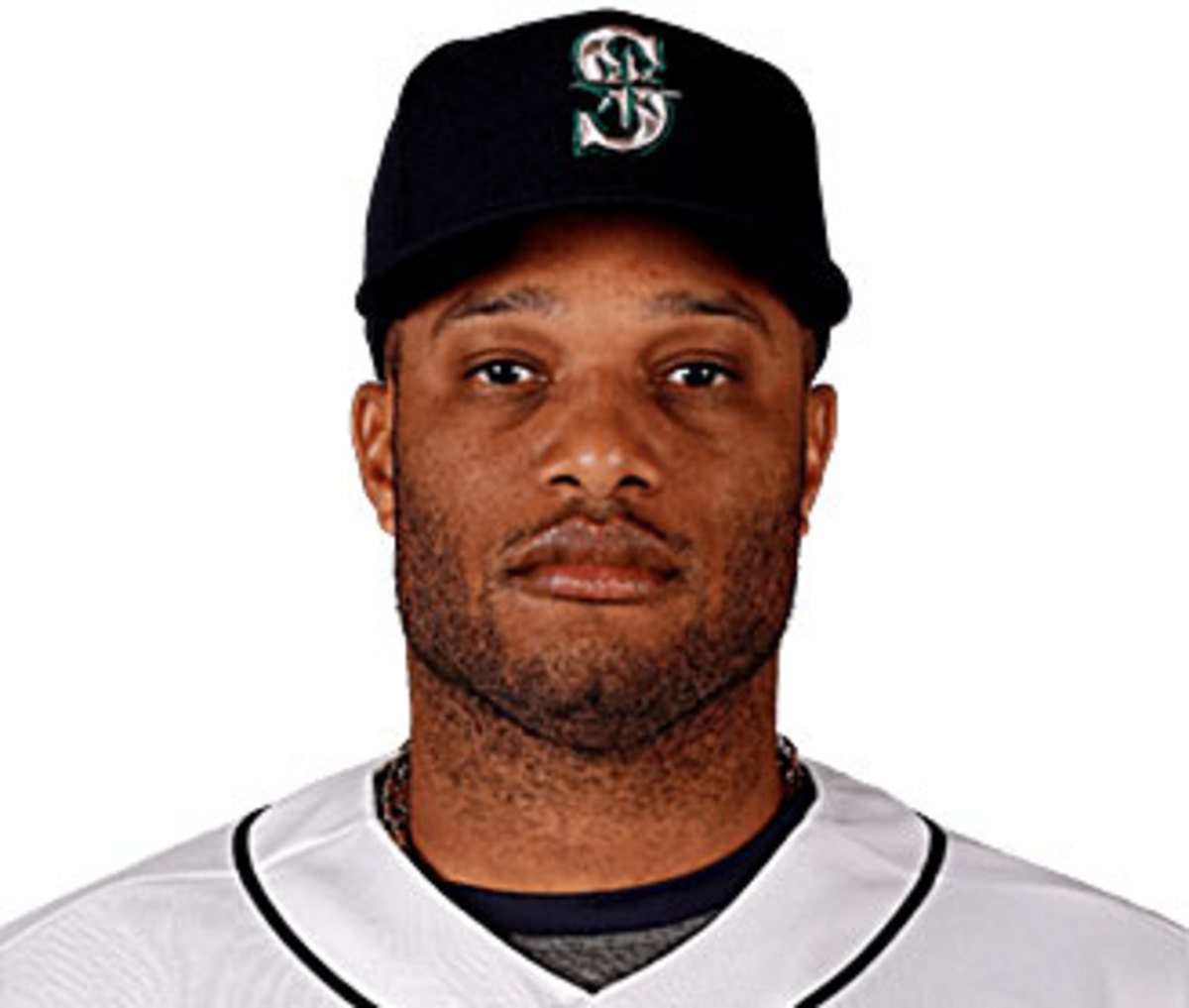
Robinson Cano, 2B, Mariners
Seed: 4
Age: 33
Swings: Left
2016 HR (HR/Con): 21 (6.8%)
Career HR (HR/Con): 260 (4.3%)
Average Distance: 393 feet
Long: 427 feet
Avg. Exit Velocity: 104 mph (High: 109.9)
The 2011 Derby champion returns to the event for the first time since '13. Cano’s 32 home runs at Arizona's Chase Field in 2011 are tied for the fourth most ever in a single derby, but he managed just four more in the next two derbies combined, failing to homer amid taunts from the Kauffman Stadium crowd in '12, when, as captain of that year’s American League Derby team, he declined to include Billy Butler, the Royals’ leader in home runs.
Four years later, Butler has managed just two home runs for the A’s, and Cano is enjoying his best power season since 2012, having already matched his '15 home run total with 21. Cano’s power dipped in his first season with the Mariners in 2014, and he got off to an awful start in '15 due to injury, illness and the loss of his paternal grandfather. Since June 22 of last season, however, he has hit 40 home runs in 785 plate appearances, a rate of 37 per 162 games.
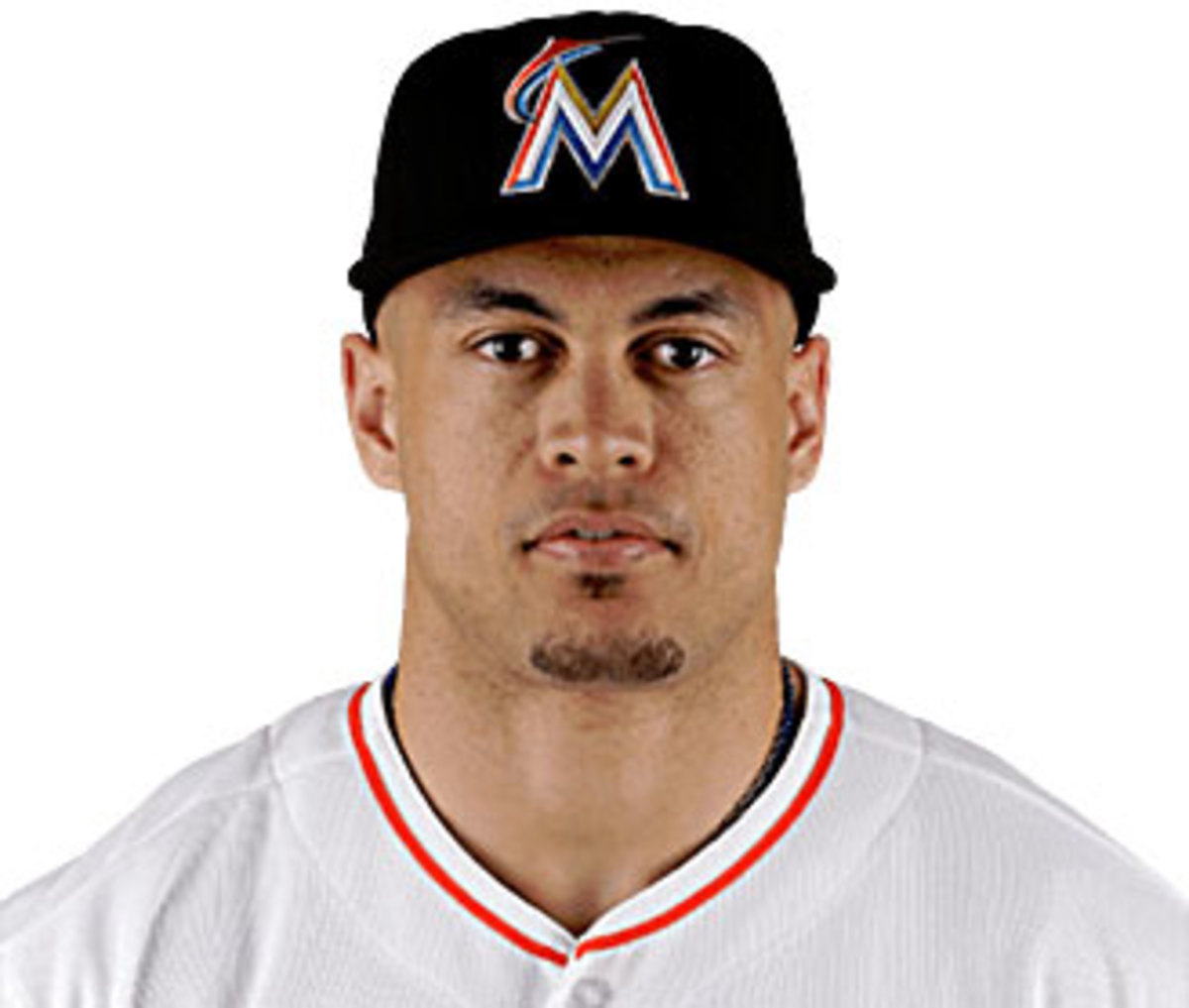
Giancarlo Stanton, OF, Marlins
Seed: 5
Age: 26
Swings: Right
2016 HR (HR/Con): 20 (11.5%)
Career HR (HR/Con): 201 (10.5%)
Average Distance: 420 feet
Long: 475 feet
Avg. Exit Velocity: 110 mph (High: 116)
Stanton is nothing less than the most powerful hitter in the major leagues. The six hardest-hit fair balls in the majors this season and the second-longest home run have all come off his bat. Among the eight contestants in this year’s Derby, none has a higher average exit velocity on his home runs than Stanton’s spectacular 110 mph, and only Gonzalez, who is aided by Denver’s thin air, has a longer average distance on his round-trippers than Stanton’s 420 feet. Sixteen of Stanton’s 20 home runs have traveled 400 feet or further this season—a larger percentage of his home runs surpassed 400 feet than any other entrant in this year’s Derby. Stanton also leads the pack in home runs on contact both for this season and career.
Despite all of that, this will be just Stanton’s second Derby appearance, and he was a bit of a disappointment in his first in 2014. He did hit six home runs in the first round of that Derby—one of them a 510-foot monster that almost left Minnesota's Target Field entirely—and advanced to the second round, but he went homerless in his next turn, falling short of the finals. He has a tough road to the finals this year, matching up with Cano in the first round with Trumbo likely waiting from him in the semifinals. He’s coming in hot, though, having hit five home runs in the final five games of the first half and boasting a .714 slugging percentage with eight home runs over his last 17 starts dating back to June 20.
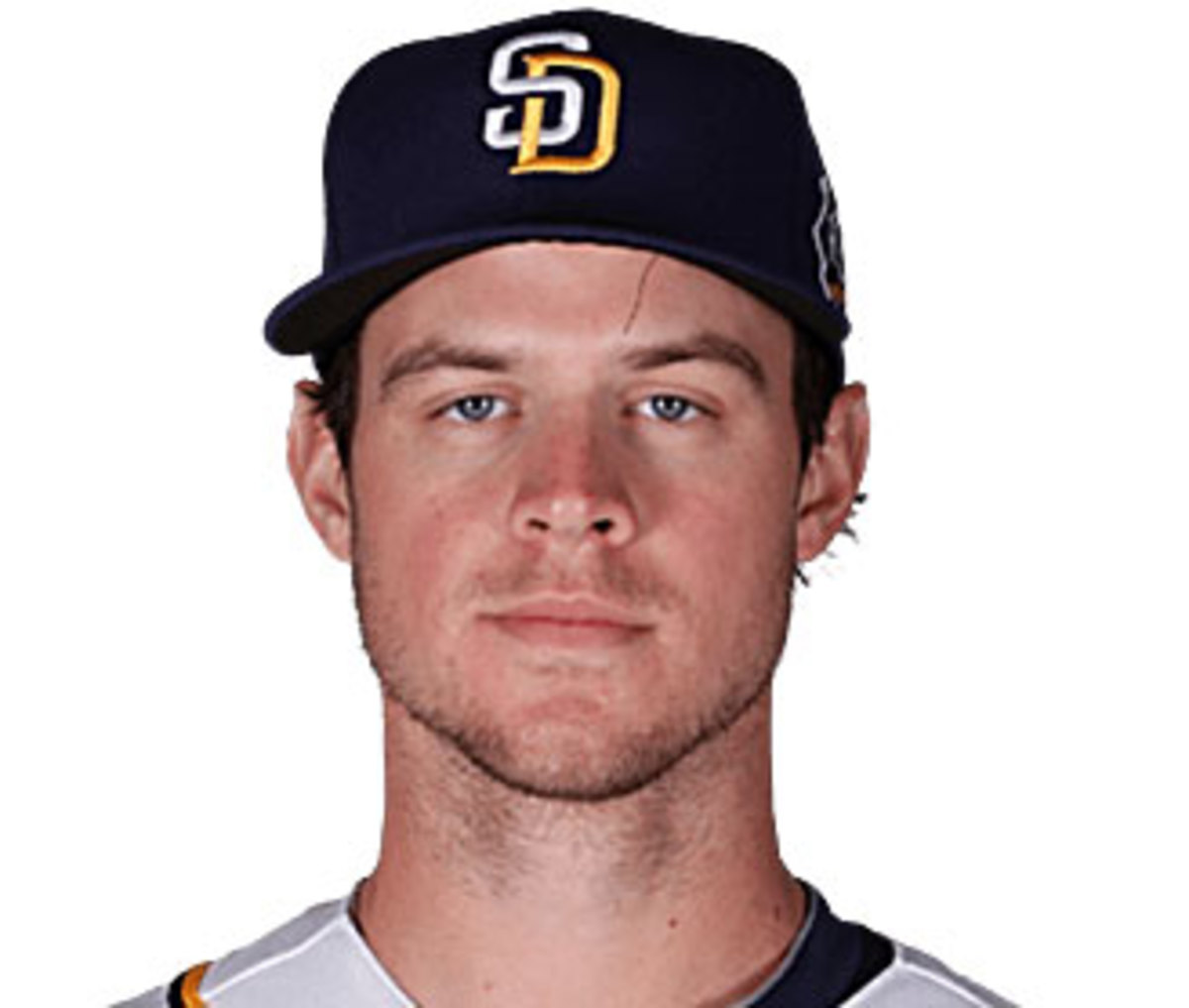
Wil Myers, 1B, Padres
Seed: 6
Age: 25
Swings: Right
2016 HR (HR/Con): 19 (7.2%)
Career HR (HR/Con): 46 (5.0%)
Average Distance: 401 feet
Long: 453 feet
Avg. Exit Velocity: 105 mph (High: 113)
This year's home team entrant is no token selection. Myers is having a breakout season at the plate this year, slugging .535 with 19 home runs through the Padres’ first 87 games, and 12 of those homers came between June 1 and July 1. What’s more, the bulk of that power production has come at home in San Diego, where Myers has hit .339/.392/.644 with 13 home runs, hitting the ball out to all fields.
Still, Myers's home-road splits do shed some light on the impact of Petco Park. He has two home runs of 450 feet or more at Coors Field this year but hasn’t hit a ball more than 415 feet anywhere else, and his longest at home has been 411 feet. His average exit velocity on home runs has been fairly consistent (104.7 mph at home, 105.0 mph on the road), but his average home run distance at home is a mere 394 feet compared to 415 feet on the road, more than 20 feet shorter. Coors Field and the smaller sample size of his road home runs (just six) surely skew those numbers somewhat, but the impact of air density on home run distance is nonetheless apparent in his stats.
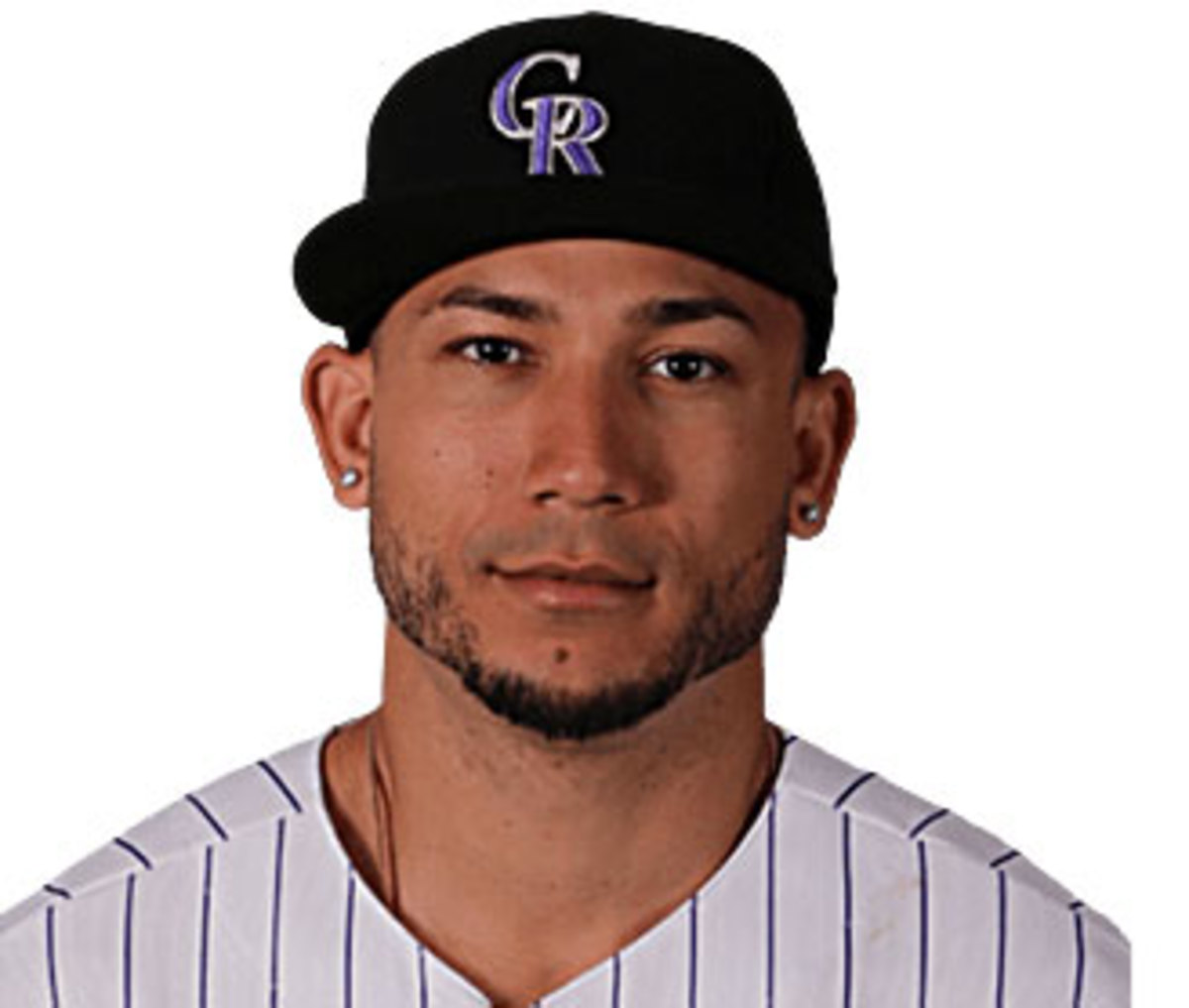
Carlos Gonzalez, OF, Rockies
Seed: 7
Age: 30
Swings: Left
2016 HR (HR/Con): 19 (7.4%)
Career HR (HR/Con): 195 (6.9%)
Average Distance: 424 feet
Long: 462 feet
Avg. Exit Velocity: 106 mph (High: 117)
Gonzalez, who hit a career-high 40 home runs last year, hasn’t participated in a Derby since 2012, when he hit just four homers in the first round and failed to advance. Like Myers, his home/road splits are worth examining: Gonzalez’s average Coors Field home run this season has traveled 429 feet, and his average road homer has gone just 413 feet, despite the fact that Gonzalez’s average exit velocity is three miles per hour faster on the road. A small road sample again likely skews the numbers: Gonzalez has hit 14 of his 19 home runs at home, but the effect is clear.
For what it's worth, Gonzalez’s longest road home run this season came at Petco on June 5, traveling 443 feet, or 32 feet farther than any ball Myers has hit in his home park. That was also his last road home run, but don’t worry about Gonzalez coming in cold: He hit his longest home run of the year on Sunday, a 462-foot shot into the third deck in rightfield at Coors Field.
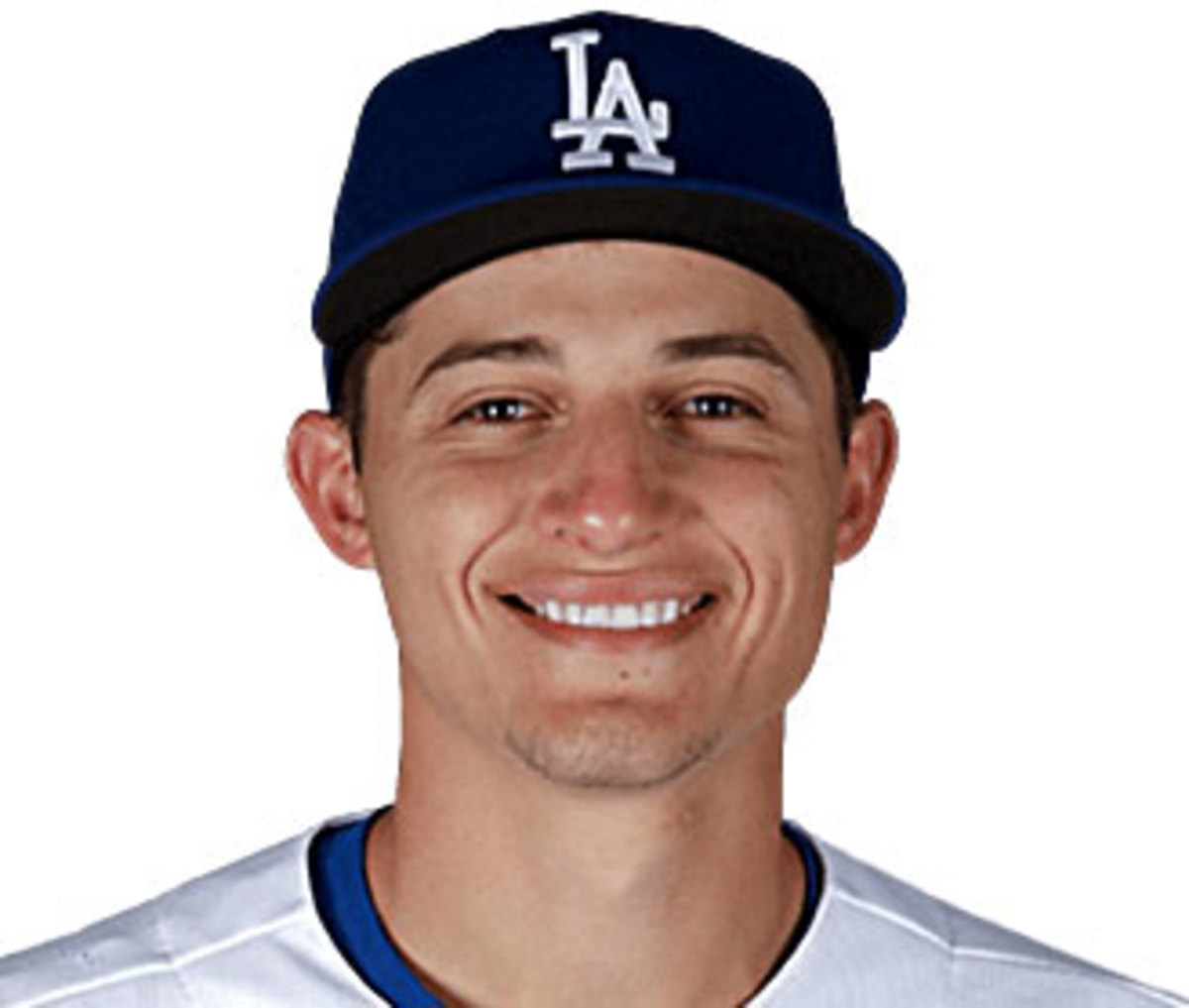
Corey Seager, SS, Dodgers
Seed: 8
Age: 22
Swings: Left
2016 HR (HR/Con): 17 (6.2%)
Career HR (HR/Con): 21 (5.9%)
Average Distance: 399 feet
Long: 440 feet
Avg. Exit Velocity: 103 mph (High: 109.9)
Seager is something of a surprise entrant, given that he doesn’t even have the most home runs in his own family this season (his brother, Mariners third baseman Kyle, has 18). Nonetheless, the 22-year-old Seager is quickly emerging as a great player: Not only is he the leading Rookie of the Year candidate in the NL and a deserving All-Star, but he is also on the fringes of the MVP conversation, as well.
Still, he may be overmatched here. Seager is last among the field in both total home runs and home runs on contact this season. He has yet to go deep in July, has hit just two home runs in his last 25 starts and he has drawn the top-seeded Trumbo in the first round. For Seager even to advance to the second round would be the biggest upset of this year’s Derby.
The Bracket
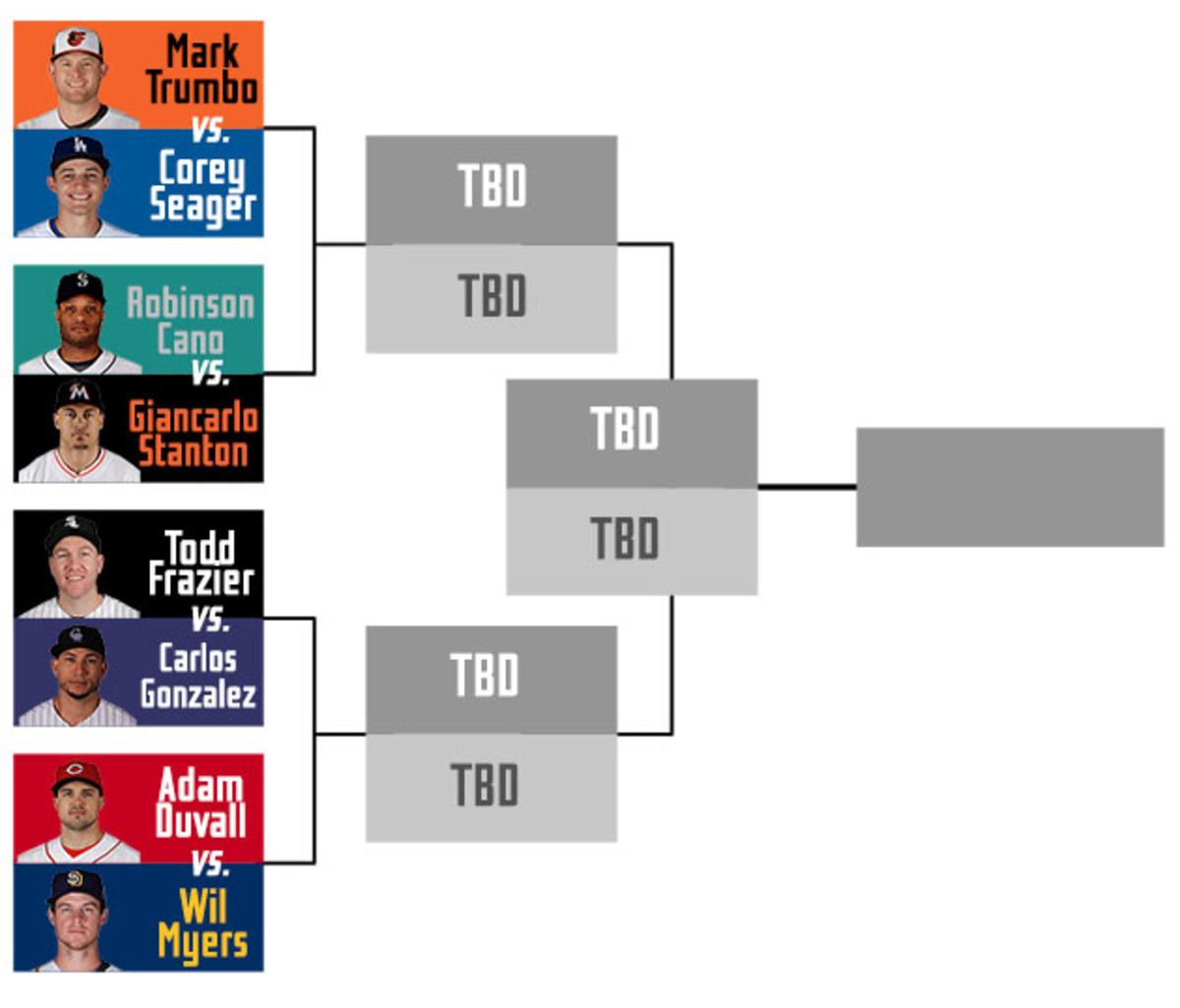
The Ballpark
Petco Park opened in 2004 and was one of the most extreme pitchers’ parks in baseball for the first nine years of its existence. Not only is it a sea-level ballpark, but it is also located about 1,000 feet from the sea itself, effectively across the street from San Diego Bay. As a result, the air in the stadium tends to be thick and salty, and the ball does not carry well.
On top of that, when Petco opened, the fence in right-centerfield was a whopping 411 feet from home plate. That corner was rounded off to 400 feet in 2005, but the most significant change to Petco’s distances came in '13. For that season, the corner in the leftfield power alley was dropped from 401 feet to 390, and that right-centerfield corner was brought in even more, moving 11 feet closer to home plate along with most of the rightfield wall. That wall was also shortened from 11 feet tall to eight feet.
As a result, a park which was once the most difficult of MLB’s 30 stadiums for a lefthanded batter to hit a home run has actually become friendly to lefty home run hitters.
According to The Bill James Handbook, Petco went from having a lefthanded home run park factor of 63 from 2009 to '11—meaning it was 37% harder to for lefties to hit a home run at Pecto than in a neutral ballpark (which would have a park factor of 100)—to a lefthanded home run park factor approaching 110 from '13 to '15. Petco has always been more fair to righthanded sluggers, and a pre-2015 renovation that updated the scoreboard in leftfield and brought the leftfield fence in a couple of feet has helped out there as well.
Visually, the signature feature of Pecto Park is the Western Metal Supply Company building in leftfield. Built in 1909 and declared a historic landmark by the city in '78, the four-story brick building was integrated into the design of the ballpark. Refurbished with balcony seating built onto its face, bleacher seats on its roof and suites, a restaurant and a team store placed inside, the building is effectively the ballpark’s keystone, with one of its corners painted yellow to serve as Petco’s leftfield foul pole. With five of the eight participants in this year’s derby being righties, that building is likely to be peppered with baseballs on Monday night.
